The last time carbon dioxide levels on our planet were as high as today was more than 4 million years ago. From atmospheric carbon dioxide emissions and sea level rise to deforestation and air pollution, here are 11 interesting climate change facts you should know about.
—
1. We are certain we caused it
The UN’s Intergovernmental Panel on Climate Change (IPCC) kicked off its 2021 report with the following statement: “It is unequivocal that human influence has warmed the atmosphere, ocean and land.”
How are we so certain? It took a while but climate modelling is now refined enough to predict how things would go without human influence, within a margin of error. What we are observing today, however, is beyond that margin of error, therefore proving that we have driven the change.
You might also like: IPCC Climate Report Warns ‘It’s Now or Never’ to Limit Global Warming As 1.5C Becomes More Out of Reach
2. The last decade was the hottest in 125,000 years
Most straightforward of our climate change facts: according to the IPCC’s sixth assessment report on the state of our climate, the past decade is likely to have been the hottest period in the last 125,000 years. For about 100,000 years, we have been oscillating between glacial (ice ages) and warmer interglacial periods like the one we currently live in. Yet, this is also the warmest multi-century period we have had in this timespan.

The vertical bar on the left shows the estimated temperature (very likely range) during the warmest multi-century period in the last 100,000 years, which occurred around 6,500 years ago during our current era called the Holocene. Only around 125,000 years ago, a time prior to the last ice age, might have had higher temperature than the ones we are currently experiencing. Each of these past warm periods were caused by slow (multi-millennial) orbital variations that are not in play today.
3. The ocean absorbs most of the heat we produce
A 2019 study found that oceans had sucked up 90% of the heat gained by the planet between 1971 and 2010. Another found that it absorbed 20 sextillion joules of heat in 2020 – equivalent to two Hiroshima bombs per second.
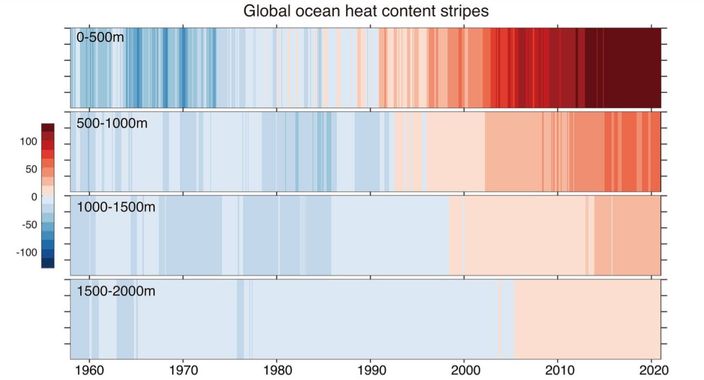
The ocean has tremendous volume and heat-storage capacity, which is why some organisms are used to temperatures being quite stable. Of these, coral reefs are particularly sensitive to temperature levels, reason for which many are now dying off.
4. CO2 is at its highest in 2 million years
Pre-industrial CO2 levels were around 280 parts per million (ppm). Today, we stand close to 420 ppm.

The most distant period in time for which we have estimated CO2 levels is around the Ordovician period, 500 million years ago.
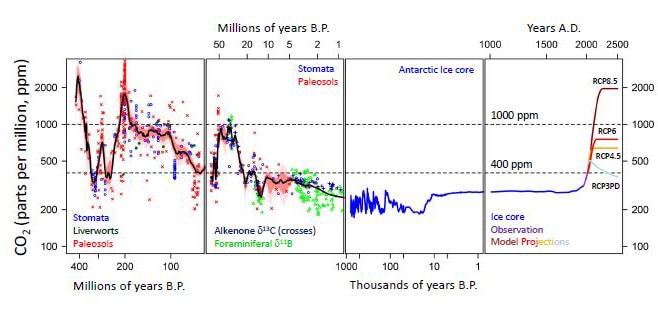
Once again, the ocean comes to our rescue by absorbing about one-third of the carbon in the atmosphere. Before the industrial revolution, it was actually a source of carbon, and not a sink, but the massive amount of CO2 now in the atmosphere has forced it to start absorbing the gas.
5. We are losing 1.2 trillion tons of ice each year
This item on our list of climate change facts can be hard to comprehend because we are dealing with volume beyond our comprehension.
Since the mid-1990s, we’ve lost around 28 trillion tons of ice, with today’s melt rate standing at 1.2 trillion tons a year. To help you put that into perspective, the combined weight of all human-made things is 1.1 trillion tons. That’s about the same weight as all living things on earth.
You might also like: Glacial Melting in Greenland Will Raise Sea Level by 10 Inches: Study
6. Air pollution is both good and bad
It was recently found that air pollution kills more than 9 million people per year. Developing hotspots in south Asia and Africa will be dealing with poor air quality for years to come, but there is a silver lining.
Polluting particles, such as PM10 or PM2.5, which cause adverse health effects similar to those of cigarettes, actually reflect the sun’s heat rather than trap it. We’ve pumped enough greenhouse gases into the atmosphere to warm it by 1.5C already, but fine particles have kept it around 1.1C so far.
Some have proposed intentionally disseminating particles into the atmosphere to help reflect more sunlight, but potential unforeseen consequences have prevented us from doing so.
7. Attribution is now possible (extreme weather)
We can now attribute natural disasters to human-driven climate change with certainty. This hasn’t always been the case, as a lack of data and refined techniques for detecting attribution made it hard to tell how much we had to do with each extreme weather events.
We can now say with precision how much likelier we made things like the North American summer 2021 heatwave, which the World Weather Attribution says was “virtually impossible” without climate change as well as the Indian heatwave, which experts believe it was made 30 times more likely because of climate change.
You might also like: The Key Takeaways From This Summer’s Heatwaves
8. Global warming is (partially) reversible
If global net emissions were entirely ceased, the warming we’ve caused would gradually reverse but other climate-induced changes would continue for decades if not centuries. For example, sea level rise would probably take millennia to reverse its course.
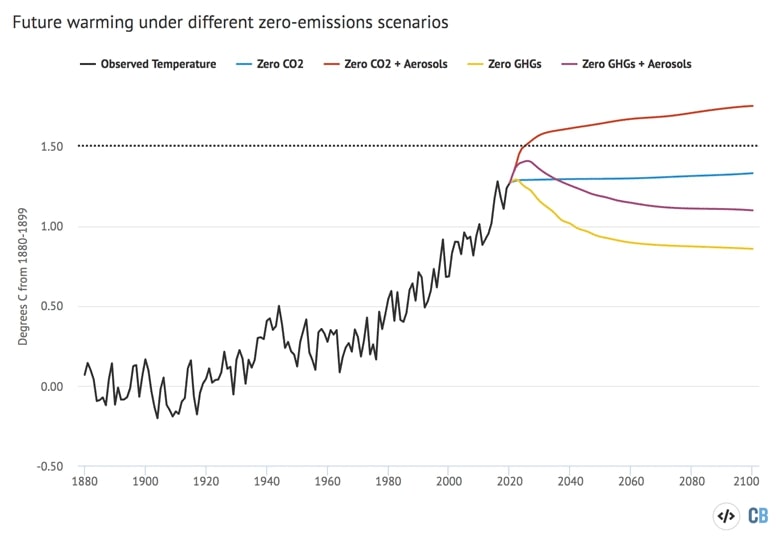
9. We lost 302.4 billion work hours to excessive heat in 2019
If you have ever been in humid South East Asia on a hot August day, you will know that working outdoors with shade is barely feasible, and without, simply dangerous. A report from The Lancet found that the number of work hours lost to heat across the globe increased from 199 billion in 2000 to 295 billion in 2020. That is equivalent to 88 work hours per employed person.
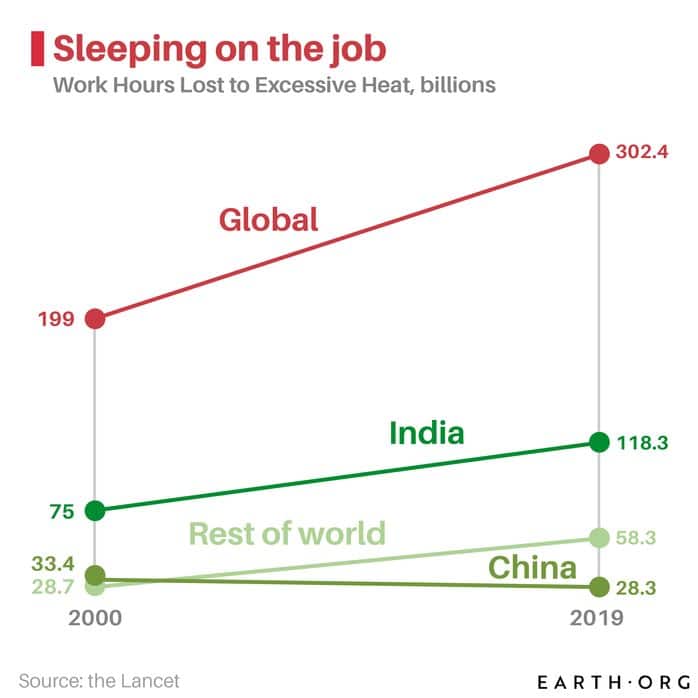
Of course, daytime outdoor labor is most exposed, which often targets lower-income areas and professions, especially agriculture.
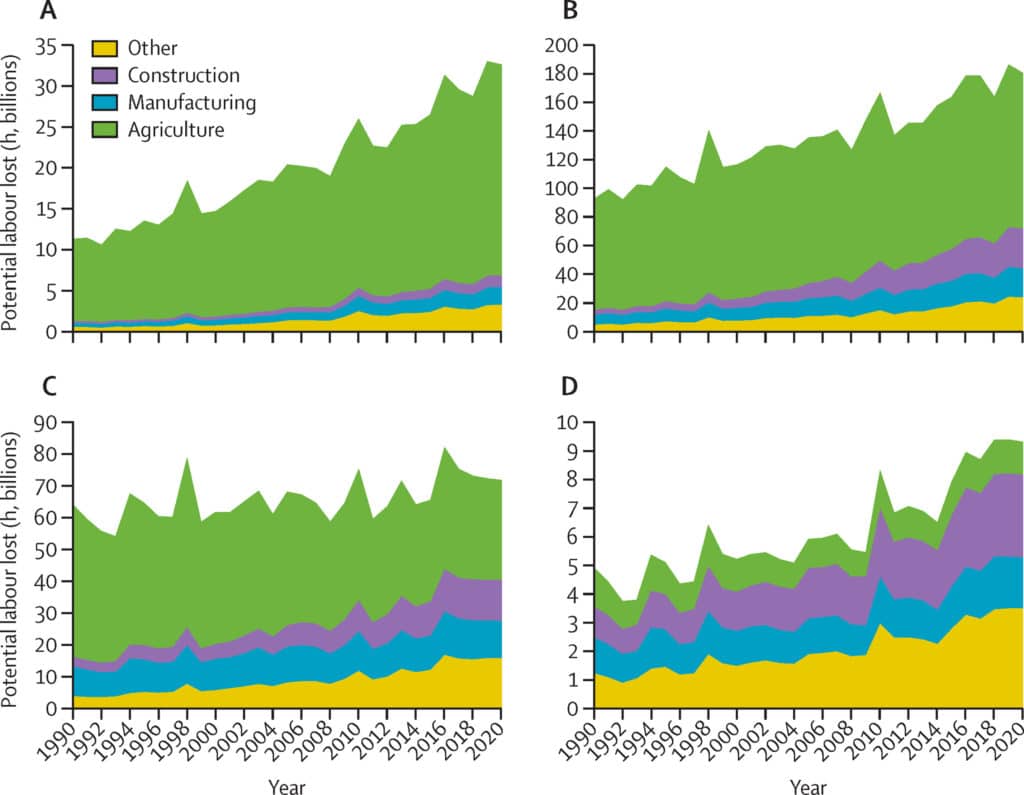
You might also like: The Tipping Points of Climate Change: How Will Our World Change?
10. It could become too hot to live in many places by the end of the century
This may the most catastrophic of our climate change facts. As of now, only 0.8% of the planet’s land surface has mean annual temperatures above 29°C, mostly in the Sahara desert and Saudi Arabia (solid black in the map below).
A study by Xu et al. (2020) called “Future of the Human Niche” found that by 2070, under a high emissions scenario, these unbearable temperatures could expand to affect up to 3 billion people (black hashes).

Lost work hours are only one example of the impacts of extreme heat, especially when sustained over long periods. Others include agriculture yield losses, the spread of disease-carrying mosquitoes, and the increased need for air conditioning with its accompanying energy consumption.
You might also like: Best Places to Live to Avoid Climate Change
11. The cost of inaction is higher than the opposite
On the current path, climate change could end up costing us 11 to 14% of the global GDP by mid-century. Regression into a high emissions scenario would mean an 18% loss, while staying below 2°C would reduce the damage to only 4%.
It has been proposed that ending climate change would take between $300 billion and $50 trillion over the next two decades. Even if $50 trillion is the price tag, that comes down to $2.5 trillion a year, or just over 3% of the global GDP.
Climate change is an incredibly complex phenomenon, and there are many other things happening that were not covered above. If you want to learn more, please visit our data visualization page!
This story is funded by readers like you
Our non-profit newsroom provides climate coverage free of charge and advertising. Your one-off or monthly donations play a crucial role in supporting our operations, expanding our reach, and maintaining our editorial independence.
About EO | Mission Statement | Impact & Reach | Write for us











![The Statistics of Biodiversity Loss [2020 WWF Report]](https://earth.org/wp-content/uploads/2020/12/lprwinkyTHB-544x306.jpg)






